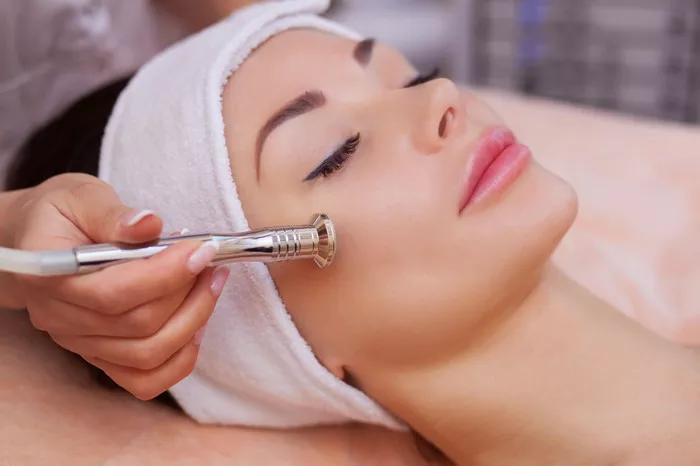Microdermabrasion has gained popularity as a non-invasive and effective skincare treatment to improve skin texture, tone, and overall appearance. This procedure involves the gentle exfoliation of the outer layer of skin to reveal fresher, more radiant skin underneath. One common question that individuals considering microdermabrasion have is how many sessions are needed to achieve the desired results. In this article, we explore the factors that influence the number of sessions required for microdermabrasion, its benefits, and considerations to keep in mind.
Understanding Microdermabrasion
Microdermabrasion is a cosmetic procedure that uses a specialized device to exfoliate the outermost layer of skin. This exfoliation process helps to remove dead skin cells, unclog pores, and stimulate the production of collagen and elastin, leading to smoother and more youthful-looking skin. Microdermabrasion can address a range of skin concerns, including fine lines, uneven texture, hyperpigmentation, and mild acne scars.
Factors Influencing the Number of Sessions
Skin Concerns: The severity of the skin concerns you want to address plays a significant role in determining the number of sessions needed. Mild concerns might require fewer sessions, while more pronounced issues might require a longer treatment plan.
Treatment Goals: Your treatment goals and expectations also impact the number of sessions. Some individuals seek microdermabrasion for general skin maintenance, while others are targeting specific concerns that might require more intensive treatment.
Skin Type: Your skin type and its sensitivity are crucial factors. Individuals with more sensitive skin might need gentler treatments spread over more sessions to avoid irritation.
Frequency: The frequency of microdermabrasion sessions also affects the overall treatment plan. Some individuals prefer more frequent, shorter sessions, while others opt for fewer sessions with longer intervals between them.
Typical Number of Sessions
On average, individuals typically undergo a series of microdermabrasion sessions to achieve the best results. A common treatment plan might involve 4 to 6 sessions spaced 2 to 4 weeks apart. This schedule allows the skin to recover between sessions while gradually improving its texture and appearance.
Benefits of Microdermabrasion
Non-Invasive: Microdermabrasion is a non-invasive procedure that requires no anesthesia or downtime, making it a convenient option for individuals with busy lifestyles.
Improved Texture: The exfoliation process helps to smooth the skin’s texture, reducing the appearance of fine lines, wrinkles, and rough patches.
Reduced Hyperpigmentation: Microdermabrasion can help reduce the appearance of hyperpigmentation, such as sunspots and age spots, by removing the outer layer of pigmented skin cells.
Unclogged Pores: By removing dead skin cells and unclogging pores, microdermabrasion can reduce the occurrence of acne breakouts and improve overall skin clarity.
Stimulated Collagen Production: The exfoliation process stimulates the production of collagen and elastin, leading to firmer and more youthful-looking skin over time.
Considerations and Aftercare
Sun Protection: After microdermabrasion sessions, it’s essential to protect your skin from the sun’s harmful UV rays. Sunscreen and sun protection measures help prevent post-treatment hyperpigmentation.
Skin Sensitivity: Mild redness and sensitivity are common immediately after a session. These effects usually subside within a day or two.
Skincare Routine: Following a proper skincare routine recommended by your skincare professional is essential for maintaining the results achieved through microdermabrasion.
Maintenance and Longevity
While microdermabrasion can yield noticeable results, it’s important to recognize that the effects are not permanent. Maintenance sessions might be necessary to sustain the benefits over time. These sessions could be scheduled every few months or as recommended by your skincare professional.
Consultation with a Skincare Professional
To determine the appropriate number of sessions for your specific needs, it’s essential to consult with a qualified skincare professional. A skincare expert can assess your skin type, concerns, and treatment goals to develop a personalized treatment plan that optimizes the benefits of microdermabrasion.
Conclusion
Microdermabrasion is a versatile and effective procedure for improving skin texture, tone, and overall appearance. The number of sessions needed varies based on individual factors such as skin concerns, treatment goals, and skin type. On average, a series of 4 to 6 sessions spaced 2 to 4 weeks apart is common. Microdermabrasion offers numerous benefits, including non-invasiveness, improved texture, reduced hyperpigmentation, and stimulated collagen production. By consulting with a skincare professional and following a proper aftercare routine, individuals can achieve optimal results and enjoy the rejuvenating effects of microdermabrasion for smoother, more radiant skin.

